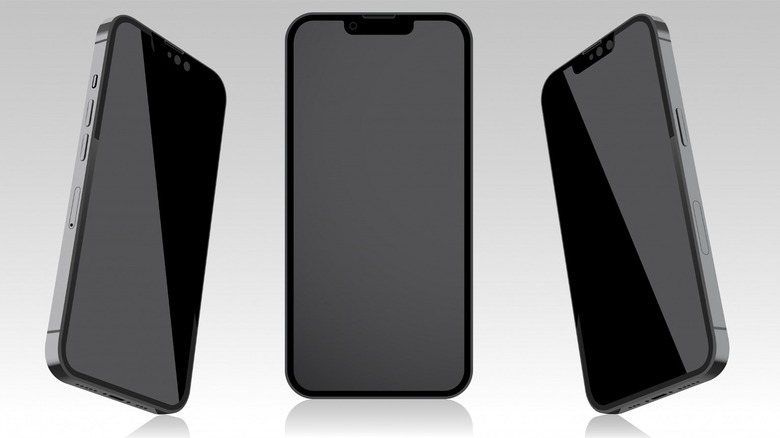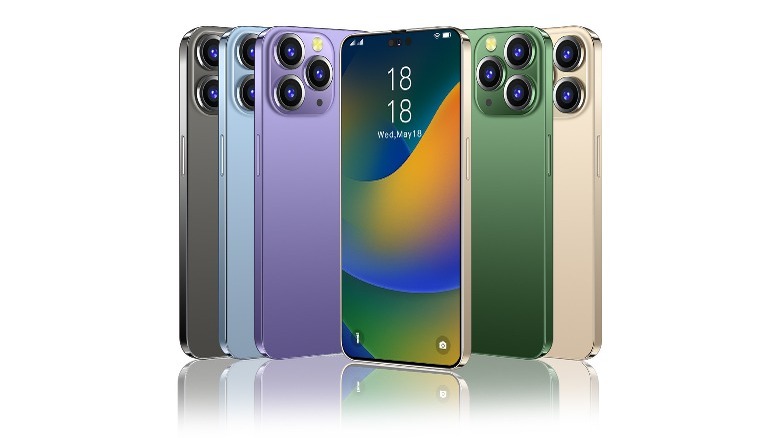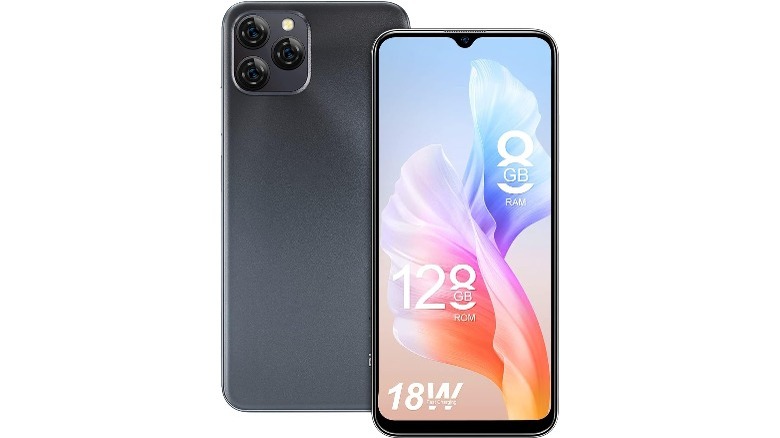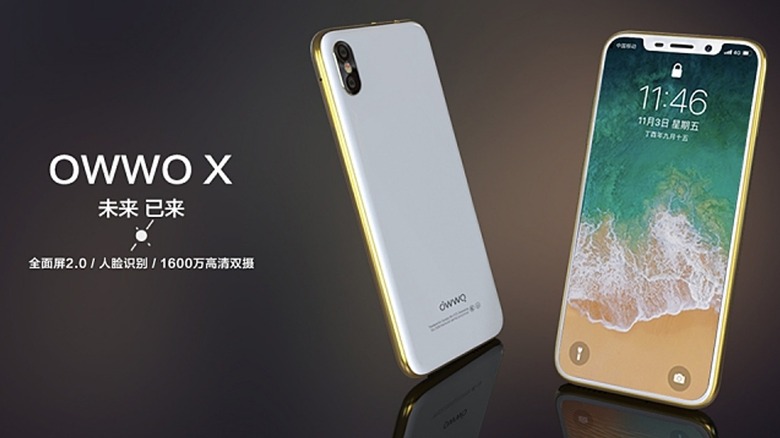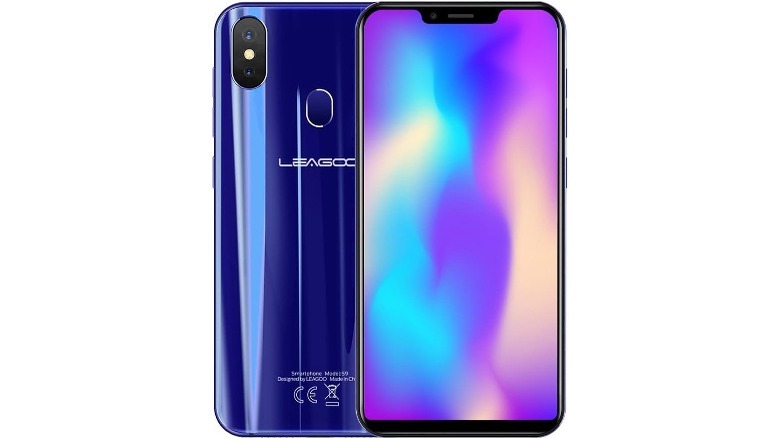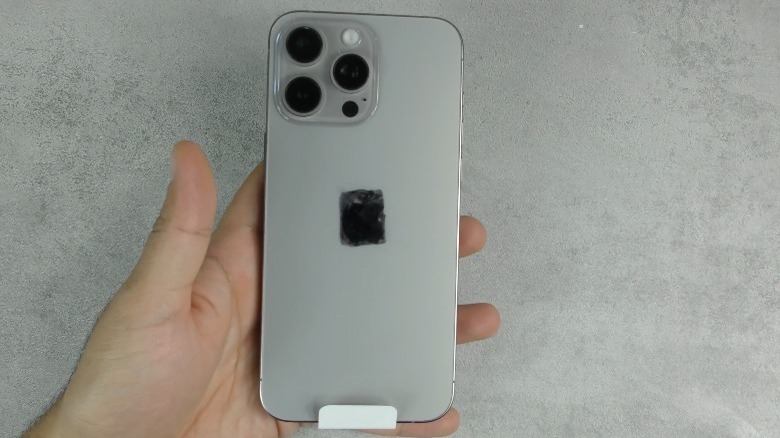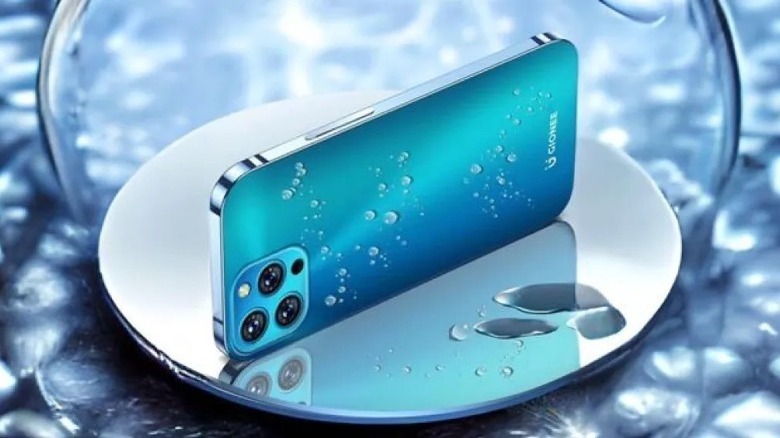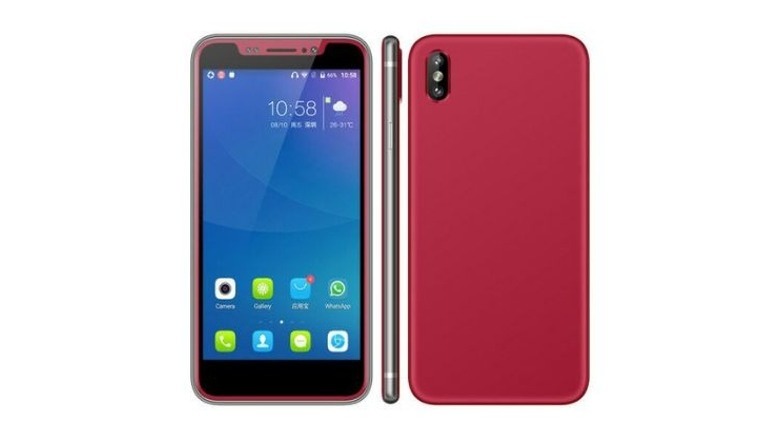10 Convincing iPhone Clones That Are Actually Androids In Disguise
Since the release of the first iPhone in 2007, Apple has consistently set the standard in smartphone design. However, not everyone is willing or able to invest in Apple's flagship device, which has left a segment of consumers searching for more affordable alternatives. This demand has given rise to a unique category of smartphones among competitors eager to capture a slice of Apple's market share — iPhone clones.
These clones go all the way back to the iPhone 6 and beyond, with each one meticulously designed to mirror the look and feel of an iPhone. So much so that, at first glance, they can easily be mistaken for the real deal. However, while iPhone clones are easy to confuse with the real thing, usually there is a stark difference when it comes to the software and hardware capabilities. Perhaps the most important difference is that unlike genuine iPhones — which all run on Apple's proprietary iOS — these clones usually operate on Android OS, offering a different ecosystem under a familiar façade.
With that said, here's a list of some of the most convincing iPhone clones you can find — all of which we are highlighting here because an unsuspecting user could mistake it for the real thing.
i14 Pro Max
Named after the iPhone 14 Pro Max, there's little doubt the i14 Pro Max is a clone of Apple's flagship device. However, while the lookalike's aesthetics may be confused with the original, it runs on a relatively old operating system, Android 8.1.
As far as the design goes, the iPhone 14 Pro Max has a 6.7-inch screen, but the i14 Pro Max has a smaller 6.5-inch screen. Inside, it has 3GB of RAM and 32GB of storage. You'll also quickly notice the dynamic island looks slightly different from the original, but with a few steps, you can display the 14 Pro dynamic island on any Android device. The clone also falls short on connectivity, offering a 4G connection versus the iPhone 14 Pro Max's 5G capability.
Still, it's worth keeping in mind that the iPhone 14 Pro Max cost $1,099 when it was released, so there's a huge price gap between both devices as the replica sells on the Chinese market for 520 CNY – roughly $72. Overall, though it is a pretty convincing clone, you're better off getting a recent Android with more processing power if you need a smartphone for everyday use.
LeEco S1 Pro
Another clear clone of the iPhone 14 Pro, the LeEco S1 Pro even tries to replicate Apple's dynamic island feature, although it ultimately can't be compared to the original regarding performance. It operates on Android 11, features 8GB of RAM, has 128GB of non-expandable storage, and includes a robust 5000mAh battery. This means it could potentially outlast the iPhone 14 Pro's 3200mAh unit. However, Apple's software optimizations for battery efficiency might level the playing field.
The LeEco S1 Pro's 6.5-inch screen is larger than the 14 Pro's 6.1-inch screen. It lacks an audio port but uses a USB-C port for charging and audio. It also comes with a 13MP rear camera and a 5MP front camera, so don't expect the same picture quality as the 14 Pro.
Interestingly, the clone and original aren't so far off in weight. The LeEco's 209.5 grams is just slightly heavier than the 14 Pro's 206 grams, showing how closely it tries to replicate the physical feel. Priced at approximately 899 CNY — roughly $126 – it's positioned as an affordable alternative in the Chinese market.
Gionee 13 Pro
The Gionee 13 Pro looks a lot like the iPhone 13, featuring Apple's signature diagonal cameras and a similar notch on the phone screen. It's nothing new for brands to incorporate Apple's smartphone design into their devices, but Gionee not only seeks inspiration for the design from Apple but also copies Apple's naming style. However, you'll immediately notice one major design difference between the two devices — the Gionee's red power button. Of course, this can be easily covered up with a phone case.
The Gionee 13 Pro is one of the first non-Huawei phones to use the Harmony OS, but you shouldn't expect much from the device when it comes to overall performance. It is equipped with a Unisoc Tiger T310 chipset, 4GB of RAM, and options for 32GB or 128GB of internal storage. While Gionee smartphones are usually available outside China, this particular model has yet to leave the Chinese shores, selling for 529 CNY, or about $83.
Blackview A95
While the notch doesn't look like an iPhone, the Blackview A95's three-camera design is similar to the iPhone 13 Pro, making it hard to tell the difference between them from a distance. The A95 has a 20MP Sony IMX376 camera lens, which the manufacturers say is great for low-light photography. However, while it may have three camera lenses like the iPhone 13 Pro, two are for show and only the 20MP lens works.
The A95 has a 6.5-inch HD display, which is larger than the 6.1-inch iPhone 13 Pro but smaller than the 13 Pro Max. Unlike the iPhone, which relies solely on facial recognition to unlock your device, the A95 comes with a fingerprint sensor on the side of the phone. It runs on the Android 11 OS and is powered by the MediaTek Helio P70 chip.
Regarding the battery, the Blackview A95 has a 4380 mAh battery capable of 18W fast charging. So, if you're looking for a clone that'll have your friends guessing if you own an iPhone 13 Pro but is also paired with a long-lasting battery, you should consider the Blackview A95. All in all, the Blackview A95 is a pretty sturdy smartphone and is now selling for $129.99 on Amazon.
OWWO X
The iPhone X brought a massive design upgrade to the iPhone series, which means this list can't be complete without at least one iPhone X clone. The success of this design led to the manufacturing of many smartphones inspired by the same design, among which is the OWWO X. The OWWO X was released in 2018 and looks exactly like an iPhone X, including a full-screen display and facial recognition, both of which are key features that set the X apart from other iPhones.
Like the iPhone X, the OWWO X doesn't have a fingerprint scanner, and like other clones, the OWWO X runs on Android OS, specifically Android 7.0. It also has a 16MP and a 5MP rear camera as well as an 8MP front camera.
When it was released, this device was available on the Chinese market for 1499 CNY, which is around $237. The phone features 3GB of RAM, 32GB of storage, and a 3180 m43Ah battery. The OWWO X has a 5.7-inch screen, just barely smaller than the 5.8-inch iPhone X screen. If all that didn't convince you that it's a convincing clone of the iPhone X, then this might — the default wallpaper on the OWWO X is the same as the standard iPhone X wallpaper.
Leagoo S9
Also marketed as an affordable iPhone X lookalike, the Leagoo S9 shares major design similarities with the iPhone X. This clone's only major difference is a fingerprint sensor on the back of the phone, which doesn't appear on Apple's iPhone X, which uses Face ID. In reality, the Leagoo S9 is actually a copycat of both Apple and Samsung. While its design is a replica of the iPhone X, it also borrows Samsung's naming sequence, dubbing itself the S9, similar to Samsung's naming sequence for its flagship device at the time, the Galaxy S9.
This dual-SIM Android device features a 5.85-inch screen — about the same size as the iPhone X — and is matched with some decent hardware. It runs on Android 8.1 and is powered by a MediaTek MT6750 chipset alongside 4GB RAM, 32GB storage space, and a 3300 mAh battery. On release, the Leagoo S9 was going for $150, much cheaper than a $1,000 iPhone X.
Hotwav Symbol S3
With a back glass and camera that's the spitting image of the iPhone X, the Hotwav Symbol S3 is another device that picked up some steam as an iPhone X clone. This device uses a USB-C port and runs on Android. The Hotway Symbol 3 also has some on-screen buttons you won't find on an iPhone X, and it has a larger notch, with the bezel taking up a lot of space on the edges of the device. In fact, on a closer look, you'll realize the screen-body ratio on the Hotway Symbol means you're getting less screen and more bezel.
Regarding its specs, the S3 is a dual SIM device with 2 GB RAM and 16 GB extendable storage. As mentioned, this device runs on Android, specifically the Android 8 Oreo, and was sold for around $400 upon release. If you're still interested in getting the phone, you can find a version with slightly different specs on Amazon.ae.
GooPhone 15 Pro Max
A frontrunner in cloning iPhones, GooPhones are Android phones that look and feel like Apple's flagship devices but at a fraction of the cost. They have gotten so popular that some people use GooPhone as a general term for iPhone super clones. GooPhones look exactly like iPhones right from the packaging, and you may not be able to tell the difference till you start using one, making it one of the most convincing iPhone clones out there.
While there are iPhone X through 14 Goophones, the GooPhone 15 Pro Max is the latest clone released. It's not just the design and packaging that make it hard to tell the difference between a GooPhone and an original; the software is also quite deceptive. The GooPhone user interface is a replica of the iPhone, and you probably fail to spot that it's an Android till you start digging closely into apps like Photos or the Files app. However, you'll also notice that it has installed Google's Play Store, which is something you definitely won't find on an original iPhone.
Gionee F1 Plus
The Gionee F1 Plus is a copy of Apple's iPhone 14 Pro with a camera design that may leave some users asking which is which. Sadly, it has only one functioning 13MP rear camera, and the other two cameras are included only for aesthetic purposes, so don't expect to take any crazy pictures with it. The major design difference between the F1 Plus and the iPhone 14 Pro is a fingerprint sensor next to the power button on the Gionee device.
The F1 Plus has a notch similar to the iPhone 14 Pro with 8GB RAM and 128GB storage, all of which runs on Android 12. It is powered by the Unisoc T610 chipset with a 13MP rear camera. The device comes with a 4,000 mAh battery, but sadly, you can only use the 10W for standard charging, which is a significant drawback since recent Android models and iPhones support fast charging. The Gionee F1 Plus costs about $175, though it's available only on the Chinese market.
Vinovo K1
One of the cheapest iPhone clones on the market, the Vinovo K1 is a budget replica of the iPhone X. While on sale, you could get the Vinovo K1 for just $60, which is a bit wild considering the iPhone X was released at $1,000. That said, it's no surprise the processing power of the K1 isn't much to look forward to — even when considering the price point.
The Vinovo K1 uses the MTK6750 chipset and runs on Android 6.0 with 1GB RAM and 8GB storage. For photos, the K1 has a 2MP rear camera and a 5MP front camera. Although it may be pretty cheap, its weak processing power is enough reason not to avoid using this budget Android phone. The Vinovo K1 is also smaller than the iPhone X, with a 5.5" screen. It also has a notch but comes with thick bezels, taking up potential screen space.
